A stylish bike frame does more than just turn heads; it can significantly enhance both the aesthetic and functional aspects of your ride. When you invest in a frame that looks great and performs well, you not only elevate the visual appeal of your bike but also enjoy a superior cycling experience. Here's how a stylish frame can make a difference in both your bike's look and your ride.
First and foremost, the design of a bike frame plays a crucial role in aerodynamics. A well-designed frame reduces air resistance, allowing for smoother and faster rides. The sleek lines and innovative shapes commonly found in stylish frames are not just for show—they are engineered to cut through the wind with minimal drag.
This aerodynamic advantage can translate into improved speed and efficiency, which is particularly beneficial for competitive cyclists or anyone looking to enhance their performance on the road.
Weight is another critical factor where frame design makes a significant impact. Stylish frames, especially those made from carbon fiber, are typically lighter than their traditional counterparts.
Carbon fiber offers a high strength-to-weight ratio, meaning you get a robust frame that doesn't weigh you down. This weight reduction is crucial for climbing hills and accelerating quickly, making every ride more enjoyable and less strenuous.
Handling is also improved with a well-designed frame. A stylish frame often incorporates geometry that enhances stability and control, allowing for more precise maneuvering. Whether you're navigating tight corners or descending at high speeds, the right frame design can provide the confidence and control needed to tackle various terrains with ease.
Trifox Bike's carbon frames perfectly exemplify how style and functionality can coexist. Their frames are not only visually appealing but are also crafted with the latest technology to ensure top-tier performance.
Carbon frames from Trifox are designed to not only catch the eye but also optimize aerodynamics, weight, and handling. This combination of style and substance makes them an excellent choice for cyclists looking to upgrade their rides.
One of the standout features of Trifox's carbon frames is their lightweight construction. These frames are meticulously engineered to reduce weight without sacrificing strength, making them ideal for both long-distance rides and quick sprints. Additionally, the frames' sleek and modern design enhances aerodynamics, helping riders maintain higher speeds with less effort.
Moreover, Trifox frames incorporate advanced carbon layup techniques to improve stiffness and responsiveness. This ensures that every pedal stroke is efficiently transferred into forward motion, providing a dynamic and exhilarating riding experience. The durability of these frames also means that they can withstand the rigors of different cycling environments, from smooth city streets to rugged trails.
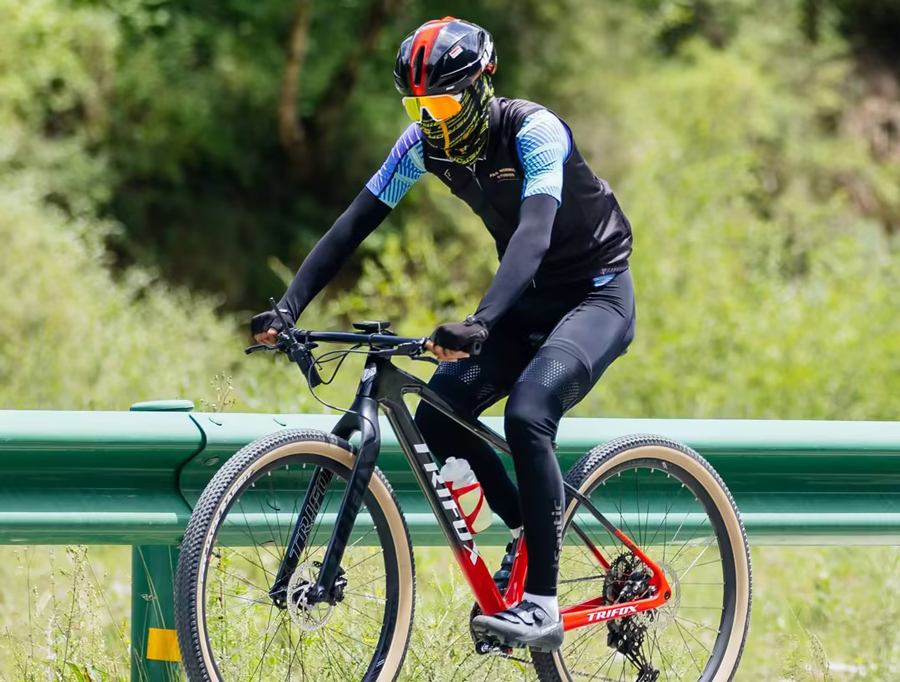
For those interested in combining style with performance, Trifox Bike offers a range of carbon frames that cater to various cycling needs. Whether you're a road cyclist, a mountain biker, or someone who enjoys leisurely rides, Trifox has a stylish frame that can enhance your cycling experience.
Explore Trifox Bike's selection of carbon frames at the official store to find the perfect blend of aesthetics and performance for your bike. Investing in a stylish frame not only improves the look of your bike but also elevates your ride to new levels of enjoyment and efficiency. With the right frame, your bike becomes an extension of your personality and your passion for cycling, ensuring that you ride in style and comfort.
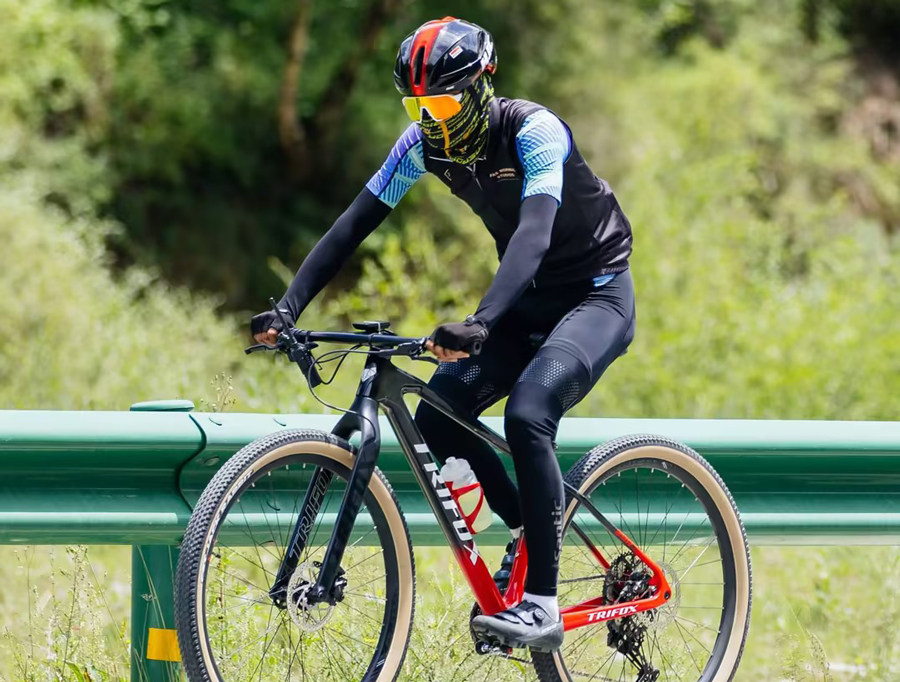
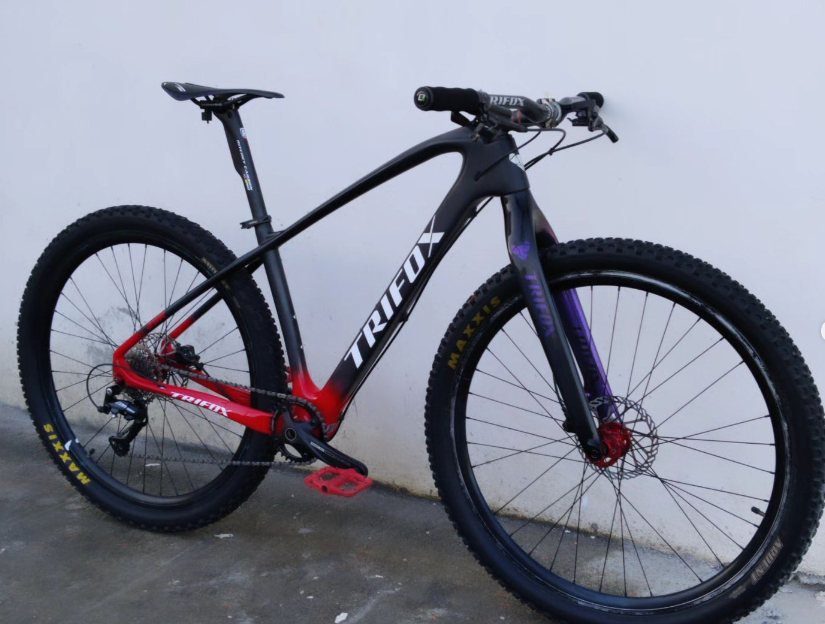
Boost rigid carbon forks offer a blend of strength, lightweight performance, and precise handling, making them ideal for demanding trail rides. Here’s how to maximize the benefits of your boost rigid carbon fork, like the Trifox TMK100.
1. Proper Installation
Start with the correct installation. Ensure the fork is compatible with your frame and wheel setup. The Trifox TMK100, designed for 29er wheels and disc brakes, features a tapered steerer tube for improved stiffness and control. Carefully follow the manufacturer’s instructions to secure it properly and achieve optimal alignment.
2. Wheel Compatibility
Ensure your wheels are boost compatible (110mm front hub spacing). This wider stance enhances stability and provides better handling on technical trails. Pairing your fork with the right wheels is crucial for maximizing performance.
3. Tire Selection
Match your fork with suitable tires. Wider tires (up to 2.5 inches) offer better traction and comfort, complementing the fork's rigid nature. Adjust tire pressure to find a balance between grip and rolling resistance based on trail conditions.
4. Regular Cleaning
Keep your fork clean. Mud and debris can accumulate, affecting performance over time. After rides, gently rinse off dirt and dry thoroughly. Avoid high-pressure water, which can damage the fork’s finish.
5. Periodic Inspection
Regularly inspect your fork for any signs of wear or damage. Check for cracks, especially around the steerer tube and axle mount areas. Early detection of issues allows for prompt repairs, preventing further damage.
6. Maintenance
Though rigid forks require less maintenance than suspension forks, occasional lubrication of the headset and cleaning of the fork legs ensures smooth operation. Follow the manufacturer’s guidelines for any specific maintenance procedures.
7. Ride Adjustment
Adjust your riding style to leverage the fork's rigidity. Approach technical sections with confidence, knowing that your rigid fork offers precise handling and direct feedback from the trail.
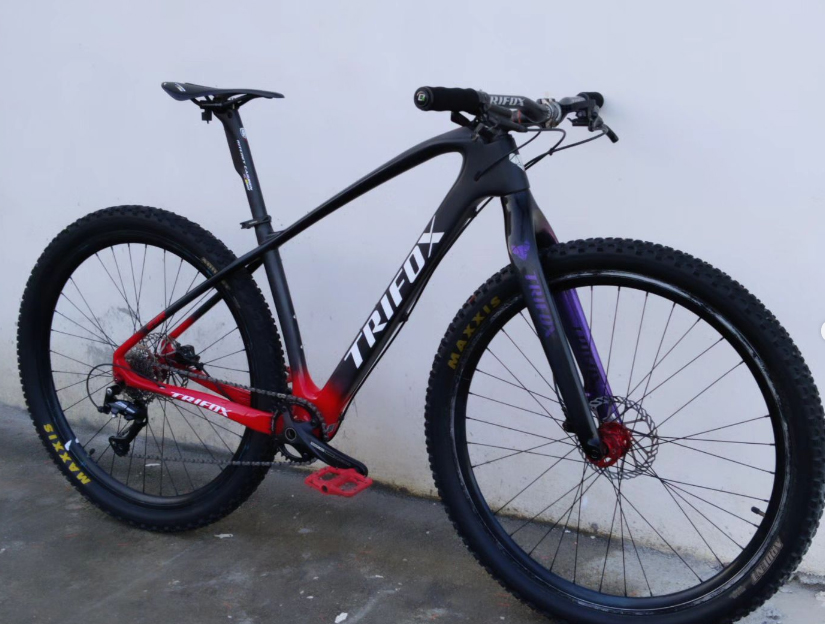
By following these tips, you can get the most out of your boost rigid carbon fork like the Trifox TMK100, ensuring a reliable and exhilarating ride on any terrain.
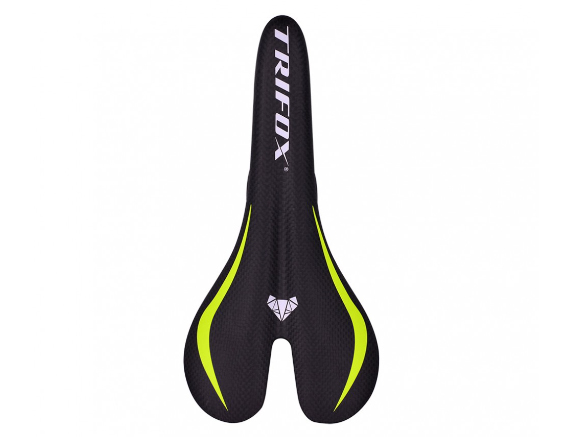
Choosing the right bike saddle can make a world of difference in your cycling experience, influencing both comfort and efficiency. Whether you're a casual rider or a seasoned cyclist, the right saddle can prevent discomfort and improve your performance. Here's a guide to help you select the perfect saddle, like the Trifox Carbon Bike Saddle, for your needs.
1. Understand Your Riding Style
Your riding style plays a crucial role in determining the best saddle for you:
Recreational Cycling: If you ride casually, prioritize a saddle with more padding and a wider shape.
Road Cycling: Competitive riders should look for a lightweight, narrow saddle that allows for more aggressive positioning.
Mountain Biking: A durable saddle with adequate padding and shock absorption is essential for rough terrains.
2. Consider Saddle Shape and Width
The shape and width of the saddle are vital for comfort:
Shape: Flat saddles are ideal for flexible riders who shift positions frequently, while contoured saddles suit riders who maintain a consistent position.
Width: The saddle should support your sit bones without causing pressure on soft tissues. Measure your sit bone width and choose a saddle that accommodates it.
3. Look at the Padding
Different types of padding suit various riding styles:
Minimal Padding: Lightweight saddles with minimal padding, like the Trifox Carbon Bike Saddle, are perfect for road cyclists who prioritize speed and efficiency.
Gel Padding: Provides extra comfort for long rides but may add weight.
Foam Padding: Offers a good balance between comfort and support for most riders.
4. Material Matters
Saddle materials affect durability and comfort:
Leather: Molds to your shape over time, offering personalized comfort but requires maintenance.
Synthetic: Durable and weather-resistant, suitable for most conditions.
Carbon: Ultra-light and stiff, ideal for competitive cyclists looking to save weight and increase performance, as seen in the Trifox Carbon Bike Saddle.
5. Test Before You Buy
Whenever possible, test different saddles before making a purchase. Many bike shops offer demo saddles you can try for a few days. Pay attention to how your body feels during and after rides.
6. Check for Adjustability
Ensure that the saddle you choose has adjustable rails for easy fine-tuning. Proper saddle positioning can significantly enhance your comfort and efficiency.
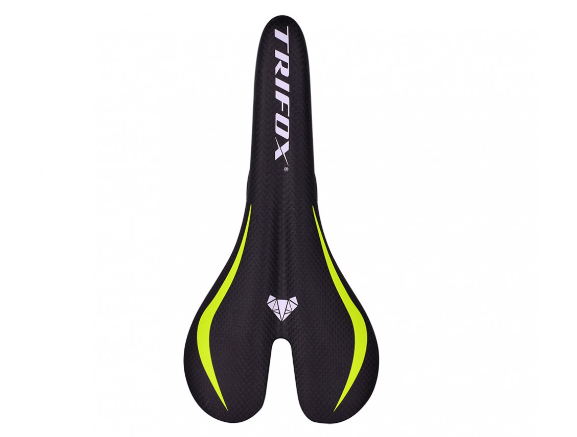
Conclusion
Choosing the best bike saddle involves understanding your riding style, considering the shape and width, evaluating the padding and materials, and testing different options. The Trifox Carbon Bike Saddle is an excellent choice for those seeking a lightweight, efficient, and comfortable saddle for various cycling needs. Invest in the right saddle today and transform your riding experience!
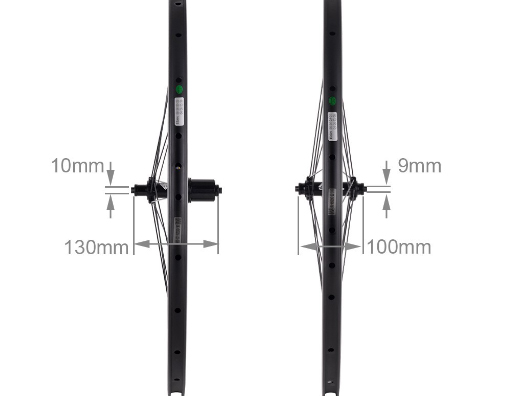
Selecting the perfect cyclocross wheelset with rim brakes for competitive racing is a critical decision that can dramatically influence your performance, comfort, and results on the course. Cyclocross challenges riders with a unique blend of varied terrain, tight corners, steep hills, and obstacles that demand both skillful riding and top-notch equipment.
In this context, your wheelset is not just part of your bike; it's part of your competitive edge. The Trifox WT17 Carbon Wheelset emerges as a standout choice for riders seeking to elevate their cyclocross racing experience. Here’s how to make an informed selection tailored to the demanding nature of cyclocross racing.
Understanding Wheelset Specifications
The Trifox WT17 Carbon Wheelset, built from 100% ultra-lightweight carbon fiber with a UD matte finish, presents an optimal blend of durability, aerodynamics, and lightweight performance. Its 25mm outer width and 18mm inner width are compatible with 700 x 25C clincher tires, offering versatility for various cyclocross conditions. When choosing a cyclocross wheelset, consider these essential specifications for competitive racing:
Material and Construction: Carbon fiber, due to its strength-to-weight ratio and vibration-damping properties, offers significant advantages over aluminum, especially in rough cyclocross courses where weight savings and comfort are crucial.
Width and Tire Compatibility: A wider rim can accommodate broader cyclocross tires, providing better traction and control on mixed surfaces. The compatibility of the Trifox WT17 with 700 x 25C tires ensures you can select tires that best match race conditions and personal preference.
Rim Depth: While the Trifox WT17 comes in 45mm, 50mm, and 60mm depth options, consider how rim depth affects performance. Deeper rims offer aerodynamic benefits on faster, more open courses, while shallower rims may perform better in windy conditions or on courses with frequent turns and accelerations.
Performance Features for Cyclocross
Rim Brake Compatibility: For cyclists sticking with the reliability and simplicity of rim brakes, the Trifox WT17’s compatibility ensures optimal braking performance, even in the gritty and wet conditions often encountered in cyclocross.
Spoke Configuration: The straight-pull Pillar spokes and nipple design—20 holes in the front wheel and 24 in the rear—balance weight savings with the resilience needed to tackle rough cyclocross terrains without sacrificing structural integrity.
Hub Quality: The Trifox T17 aluminum alloy hubs, coupled with high-quality LLU contact hub bearings (two in the front hub and four in the rear), ensure smooth rolling and durability through muddy courses and power washings. The quick-release design facilitates easy wheel removal for cleaning and transportation.
Making the Selection
When choosing a cyclocross wheelset like the Trifox WT17, consider the following steps to guide your decision:
Evaluate Your Needs: Reflect on your specific requirements based on racing experience, course characteristics, and personal preferences.Research and Compare: Investigate various wheelsets, focusing on those designed specifically for cyclocross and rim brake systems. Compare their features, benefits, and limitations.
Consider the Conditions: Anticipate the typical conditions of your cyclocross races. A versatile wheelset that performs well across a range of conditions can be a valuable asset.
Budget and Value: Balance cost with the performance benefits. While higher-end wheelsets like the Trifox WT17 offer significant advantages, ensure they align with your budget and racing goals.
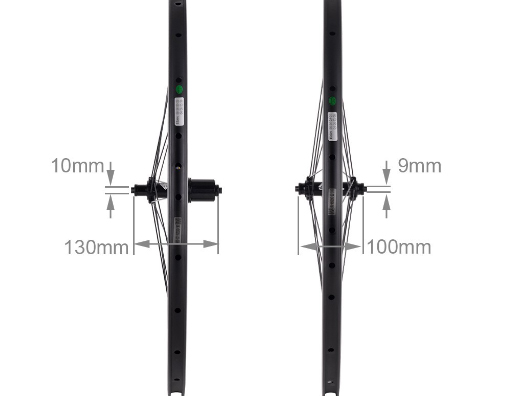
Conclusion
Choosing the right cyclocross wheelset, such as the Trifox WT17 Carbon Wheelset, involves careful consideration of various factors—from material and rim width to depth and brake compatibility.
By focusing on a wheelset tailored to the unique demands of cyclocross racing, you can secure a competitive advantage that supports your racing ambitions. With its blend of lightweight performance, durability, and versatility, the Trifox WT17 represents an excellent choice for racers committed to achieving their best on the cyclocross course.
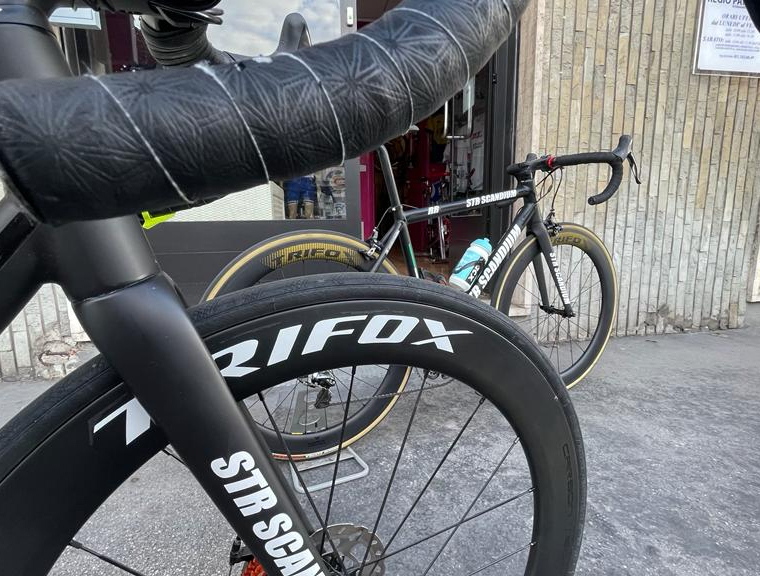
When it comes to optimizing your cycling experience, selecting the right bike wheels is paramount. Not only do they significantly influence your bike's overall performance and handling, but they also play a crucial role in ride comfort and speed. Among the multitude of options available in the market, carbon fiber wheels stand out for their exceptional balance of strength, lightweight, and aerodynamics, making them a preferred choice for both competitive cyclists and recreational riders alike.
Why Choose Carbon Fiber Wheels?
Carbon fiber wheels offer a unique set of benefits that distinguish them from their alloy counterparts. Firstly, their lightweight nature allows for quicker acceleration and easier climbing, which can be a game-changer on hilly terrains or when racing against the clock. Moreover, the stiffness of carbon fiber ensures efficient power transfer, allowing you to get the most out of every pedal stroke. Additionally, the material's ability to absorb road vibrations improves ride comfort, providing a smoother experience over rough surfaces.
The Varieties of Carbon Road Bike Wheels
Among the plethora of carbon wheel options, models like WT11, WT17, and WT18 have garnered attention for their superior design and performance characteristics. These wheels are crafted to meet the demands of diverse riding conditions, from flat, speedy stretches to winding mountain roads.
- WT11: Ideal for riders seeking an all-around performance boost, these wheels offer a balanced profile that excels in various conditions, from racing to long-distance rides.- WT17: With a focus on aerodynamics, the WT17 model is perfect for cyclists aiming to reduce drag and improve speed on flat terrains and time trials.- WT18: Designed for climbers, the WT18 wheels feature a lightweight construction that makes ascents more manageable and responsive.
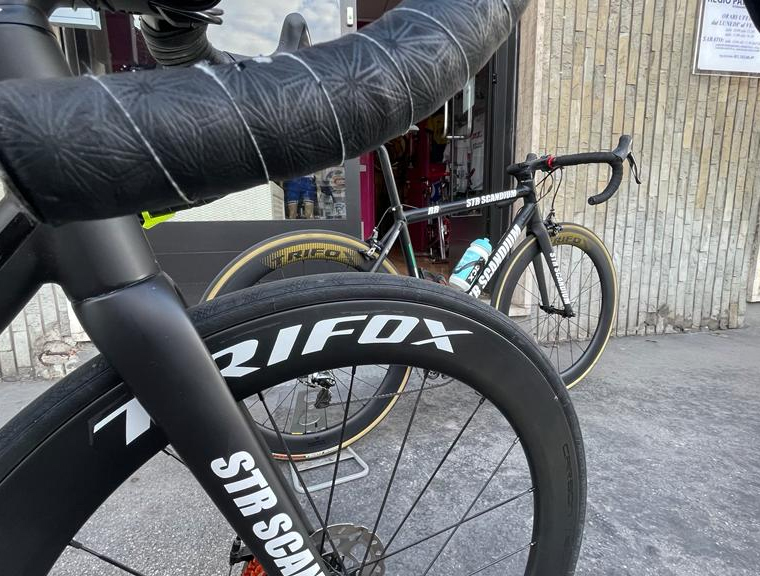
Features to Consider
When selecting the best carbon wheels for your ride, consider the following features to ensure they align with your cycling goals and preferences:
- Rim Depth: A deeper rim cuts through the air more efficiently, offering aerodynamic advantages on flat roads. Conversely, shallower rims are lighter and more versatile, better suited for climbing and variable conditions.- Brake Compatibility: Ensure the wheels are compatible with your bike's braking system—whether traditional rim brakes or modern disc brakes.-Wheelset Weight: Lighter wheels accelerate faster and make climbing easier. However, weight should be balanced with other factors like durability and stiffness.- Durability and Maintenance: High-quality carbon wheels are built to last, but it's essential to consider the ease of maintenance and availability of replacement parts like spokes and hubs.
Enhancing Your Ride with the Right Choice
Upgrading to carbon fiber wheels can transform your cycling experience, offering improvements in speed, efficiency, and comfort. Whether you're a competitive racer looking to shave seconds off your time or a weekend warrior seeking a more enjoyable ride, there's a carbon wheelset tailored to your needs.
Moreover, reputable suppliers often provide additional benefits such as free shipping for orders over a certain value, secure payment methods, and customer support services, making the purchasing process as smooth as possible. It's also worth noting that for customers in specific regions, customs duties might be included, removing potential hassles and additional costs.
Conclusion
In conclusion, investing in the right set of wheels is crucial for any cyclist looking to enhance their ride. Carbon fiber wheels, with their blend of lightweight, strength, and aerodynamic properties, offer a significant upgrade over traditional materials. By considering factors such as rim depth, brake compatibility, and wheelset weight, cyclists can find the perfect wheels to match their riding style and objectives. With the right wheels, your bike will not only perform better but also bring you more enjoyment and satisfaction on every ride.
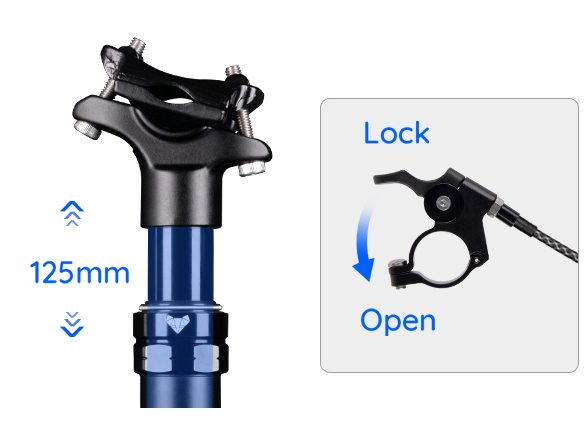
Cycling is not only a means of transportation, but it is also a great way to enjoy the outdoors, exercise, and stay healthy. However, if you want to get the most out of your cycling experience, you need to consider investing in a good lightest suspension seatpost. A suspension seatpost reduces the impact of the bumps and rough terrain on your body, which in turn reduces the risk of injury and makes your ride more comfortable. If you are looking for a light suspension seatpost that offers optimal performance, look no further than the Trifox suspension seatpost.
1. The Benefits of a Light Suspension Seatpost
A light suspension seatpost has many benefits, including reduced weight, increased maneuverability, and improved comfort. When you reduce the weight of your bike, you can cycle further and faster, especially on uphill sections. A suspension seatpost also improves the handling of your bike, especially on rough terrain, making it easier to avoid obstacles and negotiate turns. Moreover, a suspension seatpost absorbs shocks and vibrations, which helps to reduce fatigue and discomfort, thereby allowing you to ride for longer periods.
2. The Features of the Trifox Suspension Seatpost
The Trifox suspension seatpost is a top-of-the-line product that offers several advanced features. It is made from high-quality aluminum alloy, which makes it durable and lightweight. The seatpost has an air suspension system that allows you to adjust the level of damping to suit your riding style and terrain. The external cable routing and remote center are designed for convenience, ease of use, and compatibility with most bike frames. The Trifox seatpost has a travel range of 125mm, which falls into the sweet spot of travel for most mountain bikers.
3. The Importance of Weight
One of the most crucial factors to consider when selecting a suspension seatpost is weight. A heavy seatpost can slow you down, make it difficult to climb hills, and reduce maneuverability. Therefore, it is essential to choose a light suspension seatpost that provides optimal performance while keeping weight to a minimum. The Trifox suspension seatpost weighs less than 500g, which makes it one of the lightest seatposts on the market today.
4. How to Choose the Right Size
To ensure that you get the most out of your suspension seatpost, it is crucial to select the right size. The Trifox suspension seatpost comes in two sizes, 31.6mm and 30.9mm, which fit most bike frames. However, it is essential to ensure that the diameter of your bike frame matches the seatpost diameter for a perfect fit. You should also consider the length of the seatpost and the amount of travel you need for optimal performance.
5. Conclusion
A light suspension seatpost is an essential component of any cyclist's arsenal, whether you're a professional, amateur, or recreational rider. The Trifox suspension seatpost offers optimal performance, durability, and comfort while keeping weight to a minimum. In addition, its advanced features, such as air suspension, external cable routing, and remote center, make it a versatile and user-friendly product. So, if you want to enjoy a comfortable and safe cycling experience, invest in a Trifox suspension seatpost today!
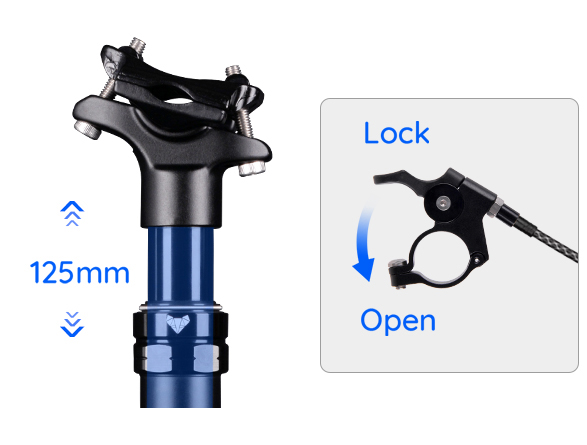
Selecting a light suspension seatpost is crucial for enhancing your cycling performance and enjoying a comfortable ride. The Trifox suspension seatpost is a high-quality product that offers several advanced features, including air suspension, external cable routing, and remote center. It is made from high-quality aluminum alloy, which is durable and lightweight. The Trifox seatpost weighs less than 500g, making it one of the lightest suspension seatposts on the market today.
So, whether you're a professional, amateur, or recreational rider, invest in a Trifox suspension seatpost to take your cycling experience to the next level.
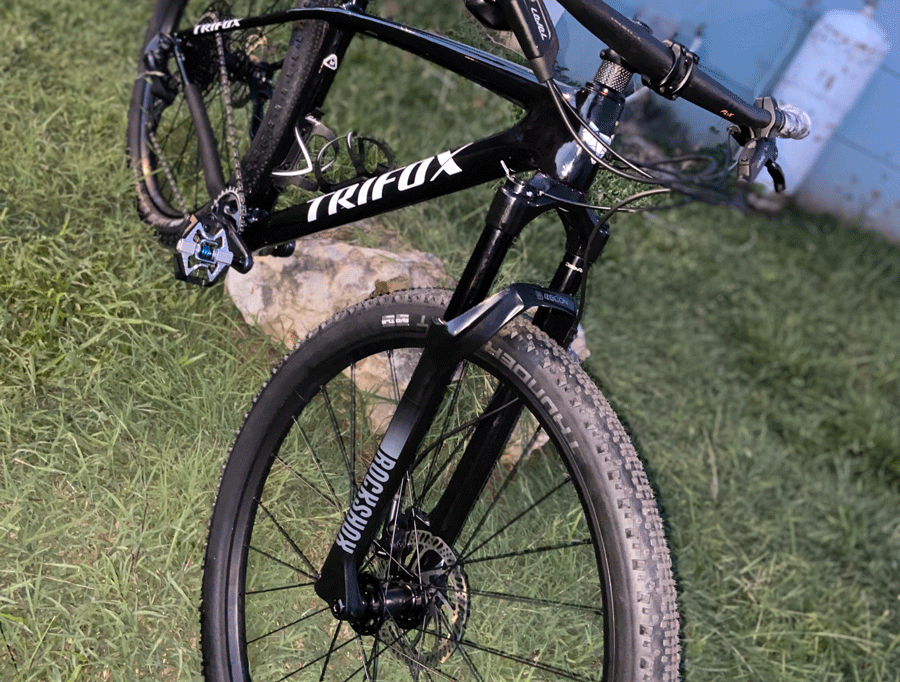
What is Enduro Mountain Biking?
Enduro mountain biking is a multi-stage, timed racing format that combines the technical downhill prowess of downhill mountain biking with the physical endurance of cross-country racing. It involves riding on a diverse range of terrains, including rocky descents, steep climbs, and technical trails. Enduro races typically consist of several timed downhill stages, interspersed with untimed transfer stages where riders pedal from one stage to another.
Features of Enduro Mountain Biking:
1. Varied Terrain: Enduro mountain biking takes riders across a wide array of terrains, including forest trails, rocky descents, and challenging climbs. This diversity tests the rider's adaptability and requires a range of skills to navigate through each stage.
2. Timed Stages: Unlike traditional mountain bike racing, enduro events focus on timing selected downhill stages. These timed sections are often technical, demanding riders to exhibit their speed and control skills while descending.
3. Transfer Stages: Between timed stages, riders must pedal uphill or traverse flat terrain within an allocated time. These transfer stages test the rider's endurance and fitness as they navigate between the downhill sections.
4. Self-paced: Enduro mountain biking is often referred to as a race against the clock, not against other riders. Riders start the stages at specified intervals, allowing them to ride at their own pace and choose the best lines while maintaining control.
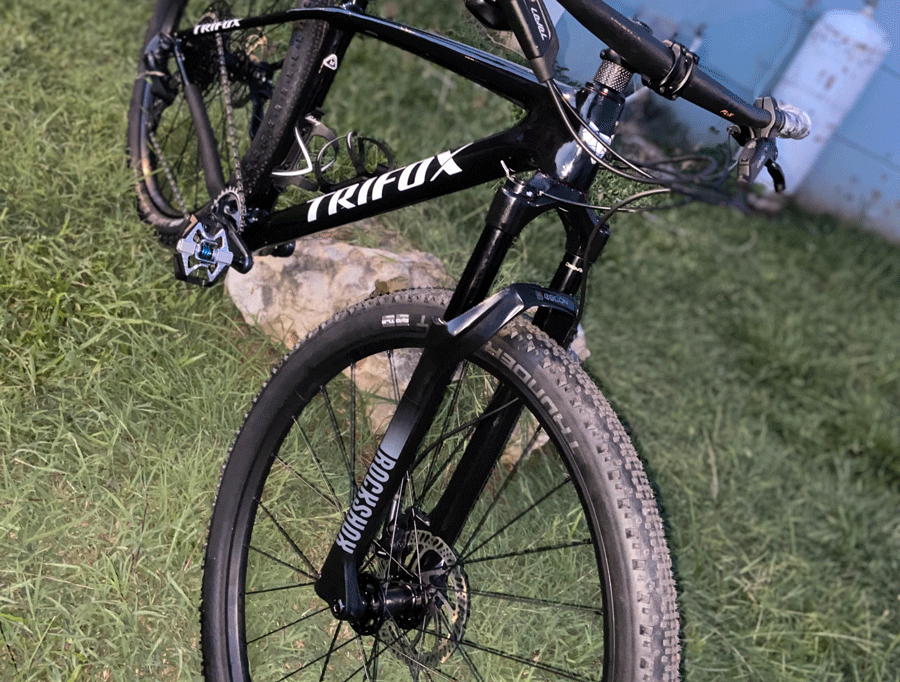
Equipment for Enduro Mountain Biking:
1. Mountain Bike: An enduro-specific mountain bike is designed to handle the demanding terrain. It typically has full suspension, larger wheels (27.5" or 29"), and robust components to offer stability, control, and durability.
2. Protective Gear: Safety is paramount in enduro mountain biking. Riders should wear a well-fitted helmet, knee and elbow pads, gloves, and sturdy footwear to protect themselves from potential crashes and injuries.
3. Clothing: Comfortable and breathable clothing that allows freedom of movement is essential. Moisture-wicking jerseys, padded shorts, and appropriate footwear are recommended.
Skills Required for Enduro Mountain Biking:
1. Technical Descending: The ability to navigate technical descents while maintaining control and speed is crucial. Riders must master techniques such as cornering, braking, jumping, and maintaining balance over challenging obstacles.
2. Climbing: Strong climbing skills help riders tackle the steep ascents between stages efficiently. Efficient pedaling techniques, body positioning, and the ability to maintain balance on uneven terrain are essential to conquer these uphill challenges.
3. Endurance: Enduro mountain biking requires a high level of physical fitness and stamina to tackle long days in the saddle. Regular cardio training, strength exercises, and core stability training are beneficial for endurance building.
Conclusion:Enduro mountain biking is a dynamic and exhilarating sport that combines the best elements of downhill and cross-country riding. As riders traverse varied terrain, tackle timed stages, and put their skills to the test, enduro mountain biking offers an adrenaline rush like no other. For those seeking a true adventure on two wheels, exploring the world of enduro mountain biking is an absolute must.
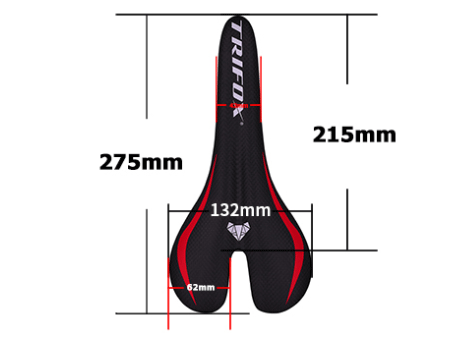
At present, bicycle seat cushions can be roughly divided into two types:
1. Narrow and slender hard seat cushion
This narrow, hard seat is commonly found on sports bikes and is designed for high-speed cruising. When the pedaling speed is fast, the wide seat cushion will easily rub the inner thighs and cause pain. It will also affect the pedaling movement, so the design is slender and narrow. A soft seat cushion cannot support the body stably and affects the pedaling efficiency. The butt will feel like it is stuck in the sofa. A soft seat cushion has a large contact area with the buttocks. If you pedal too fast, your buttocks will hurt due to excessive friction due to excessive friction. A hard seat cushion is more suitable. A quick pedaling motion.
2. Large and soft comfortable seat cushion
Comfort seat cushions are more common in entry-level bikes or leisure-oriented bikes, and are designed for slow-speed cruising. The wide design allows a larger and even support area between the seat cushion and the buttocks, and the soft seat cushion can provide better comfort. Due to the leisure-oriented pedaling movement, there is no need to consider that a wide and soft seat cushion is not suitable. The high-speed pedaling factor.
Weight distribution principle:
When riding a bicycle, your weight will fall on three supporting points: your hands, feet and butt, with the butt and feet bearing most of the weight. When you press down hard on the pedal, you are using your body weight to push the pedal down. Your feet bear more weight at this time, and the weight carried by your buttocks is relatively light. Imagine the situation of driving a car. Your butt is off the seat cushion and only your feet are stepping on it. At this time, your feet bear all the weight. So there is a saying that "the chair cushion is for leaning on, not for sitting on." The harder your feet are, the lighter the burden on your butt will be. The more weight the body puts on the feet, the greater the pedaling output. It can be seen that many race riders often leave the seat with their buttocks or only touch a small area to stabilize the body in order to maximize the output power.
The main causes of early buttock pain:
What if your feet are paddling the pedals leisurely?
correct! At this time, almost all the weight falls on your butt, and your feet are lazy and do not help you share the weight. Unfortunately, because the buttocks bear too much weight, the support area of a hard cushion is too small, which will cause pain in the buttocks. At this time, a soft and wide cushion can support your butt better than a hard and small cushion, making you less painful.
Choose right bike saddle for you:
According to your riding habits, if you like to maintain a certain level of exercise intensity, a hard saddle is a good thing. If you like to hang out and watch the scenery, your buttocks bear most of the weight, so choosing a wider and softer cushion will be better for your buttocks. (such as Trifox carbon fiber bicycle saddle CS100)
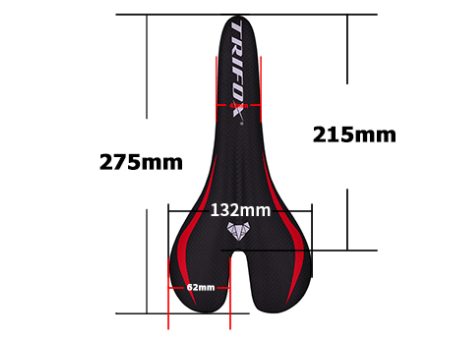
Hope that riders can understand that choosing an appropriate saddle is an effective solution for different riding habits.
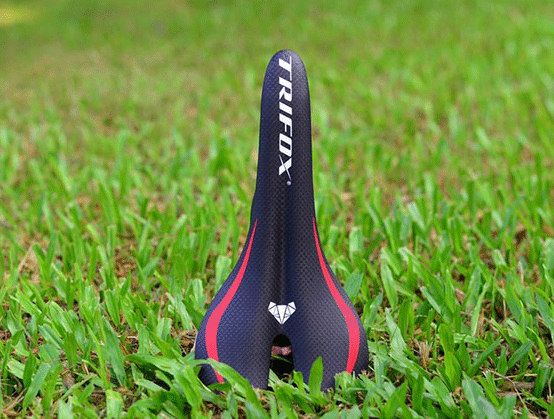
Why are bicycle seats so hard?
For example, when you sit directly on a stool, the two sit bones in your butt bear your weight. At this time, the soft tissue in the middle of the two ischial bones bears less pressure. If you place a cushion between your butt and the stool, the two sit bones will press the cushion down with greater pressure, and the soft tissue in the middle will also bear more pressure, which is especially important in bicycle seats.
Thicker saddles tend to put more pressure on your soft tissues, especially on long rides (it’s not a big problem on short rides). An over-padded saddle is also a common cause of painful inner thigh chafing as you ride longer.
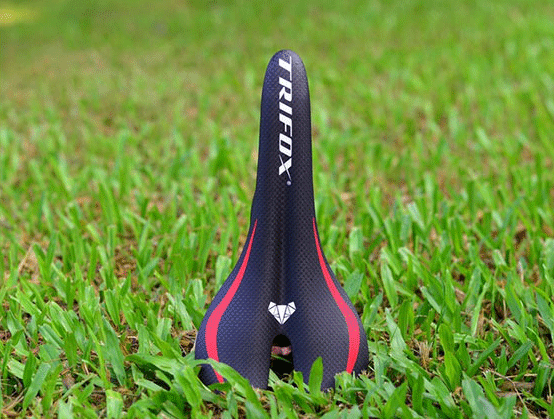
Wide or narrow?
The width of the bicycle saddle is also very important to the rider. The width of the saddle is often determined by the distance between the two sit bones. If the saddle is too narrow, the sit bones will hang off the sides of the saddle and the soft tissue will bear a greater load. If the saddle is too wide, it can easily cause chafing on the inner thighs, especially in hot weather.
The appropriate width of the saddle is also related to improper adjustment of your saddle. If the stem is too long and the handlebars are extended too far forward, or the saddle is positioned too far back, it will make the saddle look narrower.
Conventional wisdom holds that women’s sit bones are farther apart, so men’s saddles are usually narrower than women’s saddles. Of course, individual differences are different, and the requirements for saddle width are also different.
Measure sit bones
How to measure ischial distance? Find a larger piece of corrugated paper, sit vertically on the corrugated paper, and finally use a ruler to measure the distance between the two deepest points, which is the distance between your sit bones.
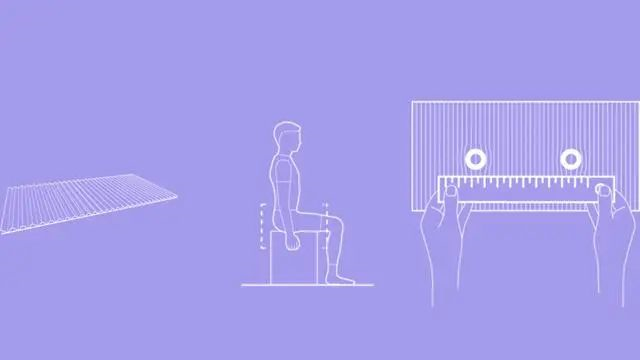
In addition to the distance between the sit bones, the size of the saddle also includes factors such as riding posture. Different riding postures will cause different pressure points on the saddle. Therefore, 3D printing technology is very popular in the manufacturing of bicycle saddles. . The following is selle royal’s reference data for different riding positions.
According to the distance between the sit bones, the saddles are divided into three categories: small, medium and large. The corresponding ischium widths are less than 11cm, 11-13cm, and more than 13cm respectively.
Athletic position (body at a 45-degree angle). 289mm*127mm (small, length times width), 289*144 (medium), 289*159
Relax posture (body at a 60-degree angle). 289mm*141mm (small), 289*161 (medium), 289*178
Relaxed position (body at a 90-degree angle). 289mm*169mm (small), 289*196 (medium), 289*224
One saddle can hold up an ordinary bicycle, especially saddles customized for professionals. They are often designed with various ergonomics in consideration of various riding postures, and are the best protection for the rider's body.
A stiffer saddle may be uncomfortable, but it often better protects soft tissue from greater damage.

























































